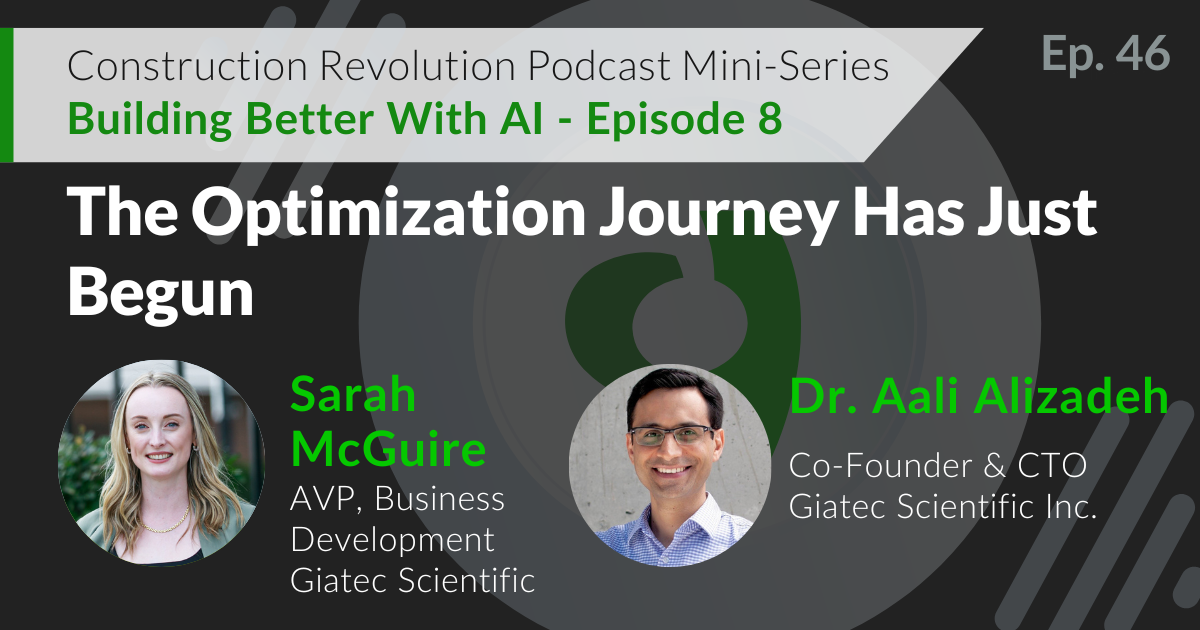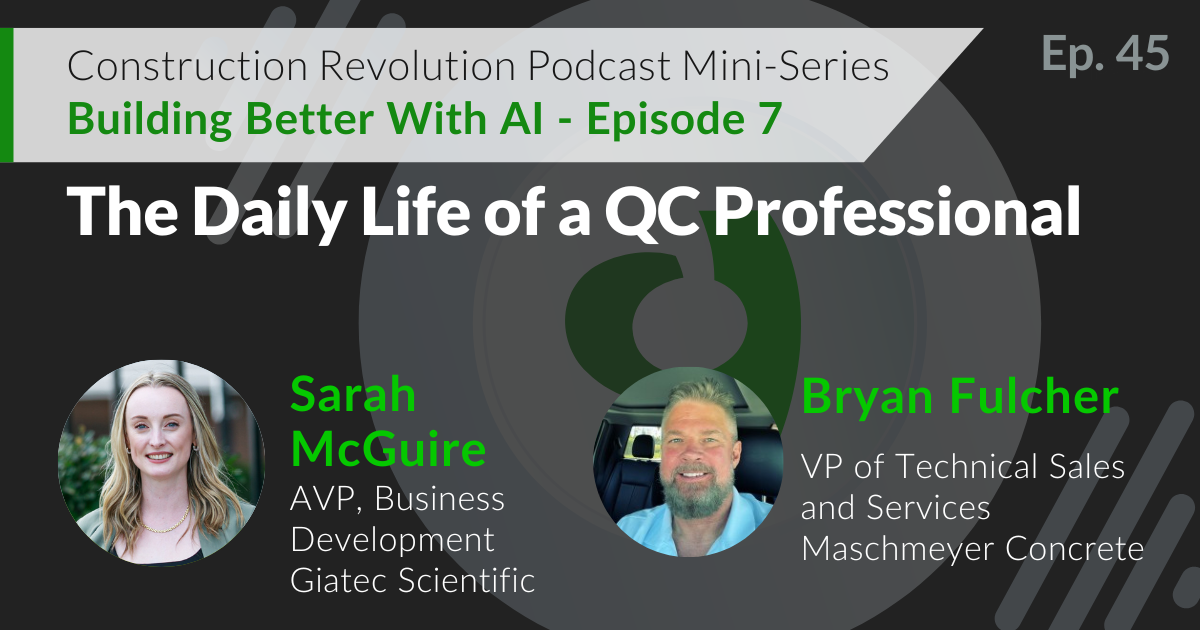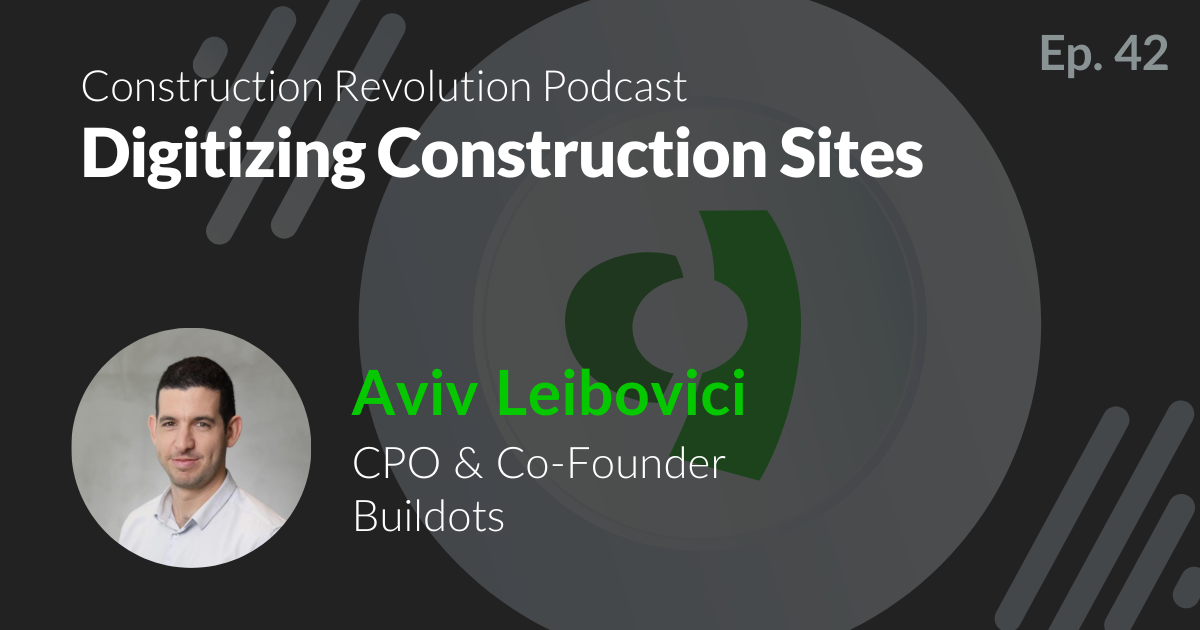
Episode 14 |
September 30, 2021
Optimizing Construction Project Schedules Using AI
In This Episode
In this episode of Construction Revolution, Andrew Fahim speaks with René Morkos, the Founder and CEO of Alice Technologies as well as an adjunct professor Stanford University where he teaches in the PhD Construction Management program. After spending years working on major construction projects all over the world, René developed ALICE, an AI-powered construction simulation and optimization platform. In this conversation, René provides a breakdown of the fascinating technologies developed at ALICE, including the world’s first “generative construction simulator”, and explains “parametric design” in under 30 seconds. He also maps out the roots of his fascination with this field both geographically and temporally, delving into the moments and places that led to defining the founding and future of ALICE.
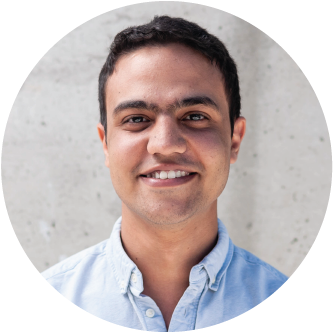
Host
ANDREW FAHIM
Director, Research & Development in R&D, Giatec Scientific Inc.
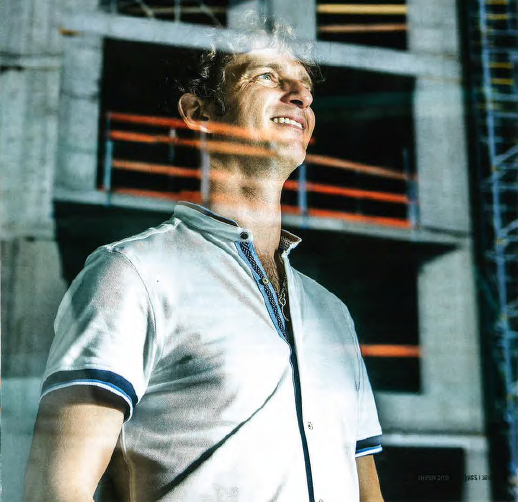
Guest
RENÉ MORKOS
Founder and CEO, ALICE Technologies Inc.
Podcast Transcript
Andrew Fahim:
Hello there and welcome to the Construction Revolution podcast. My name is Andrew Fahim and here on this show, we explore the latest trends, technologies, people and organizations that are revolutionizing or disrupting the construction industry and changing what the industry will look like tomorrow.
Today on the show I’m speaking with René Morkos, the Founder and CEO of Alice Technologies. René is also an adjunct professor at Stanford University where he teaches in the PhD Construction Management program. After spending years working on major construction projects all over the world, Rene developed Alice, an AI-powered construction simulation and optimization platform.
Rene, thank you so much for taking the time to talk about Alice today with us. We’re very excited to have you. Maybe just to start a little bit, let us know about yourself, your background. I see that you come from a civil engineering background, worked as a field engineer and a project manager in many different countries on many different, very cool projects. Tell us a little bit about how your background relates to Alice, where did you get this eureka moment or this light bulb moment of starting Alice. What sort of gaps did you see in the industry that you thought, “Hey, I have the technology to solve,”?
René Morkos:
Yeah. Thanks for inviting me. It’s great to be here, Andrew. My background, when I graduated high school … My dad’s a civil engineer so when I graduated high school my dad gave me a good piece of advice. He said, “Hey, son. Study anything you want. Just don’t do civil engineering.” And so I was like, “Okay, I now know exactly what I need to do.” So, I obviously picked civil engineering. I’ve been in construction my whole life. My dad was in construction before me. I like building things. I always did. I would actually cut class in my bachelor’s degree and go to construction sites. I don’t know if my professors knew at the time, but I would knock on construction sites … I would find the coolest projects in town, that’s underwater construction or large university campus, and I’d offer my services for free. I just liked to build things.
I started as an assistant site foreman when I was 17, worked my way up the ranks, became a site engineer, project manager, then built several … Went to Afghanistan, designed, built, procured my own jobs from scratch with a German contractor. Ended up doing a PhD at Stanford. Did six months … Study, six months work, so I paid for the program. Then ended up spinning out the PhD into what is today Alice Technologies.
The technology, itself, is … It’s the world’s first generative construction simulator. It’s capable of generating millions of different ways of building a construction project. That’s a little bit of the background.
Another question you asked me is how did I … what was a key moment of realizing, thinking, “Hey, I need to go build this technology.” Actually, I wish there was one. There’s two, all right? There’s two moments over the last almost 20 years at this point. The first moment was somewhere in 2005. I’m building these landing strips for F16s in Kabul. Exotic location, exotic project, but it’s a concrete slab. And the sun’s rising, it’s really cold. I don’t think people realize how freezing it is. And I’m trying to figure out how to sequence the work. I had, I think, 33 people, so I was like, “Ah, well if I put six people here to do the steel and then I move them over there and then they do the foam work. Well, then I can’t do the foam work here. Then I got to switch them this way.”
I remember thinking, “Man, I got to be stupid. I can’t seem to figure this out.” So, I thought to myself, “Well, let me go learn how the pros do it. Let me go to the US.” I went to USC, got my master’s degree there, and I kept looking for this tool. I kept looking for this tool that would solve that specific problem. How do I build the darn thing? What do I do? I didn’t find it at USC. I thought to myself, “Stanford.” I said, “If anybody’s got it in the world, I’ll find it at Stanford.” Showed up at Stanford, started working on their stuff there.
That was kind of the first moment. The second moment was … This kind of went on the back burner and I was looking for a research topic as a PhD student. Every PhD student needs a good research topic. And I remember being on a construction site that was late. It was six weeks late. Every day it’s 50,000 euros. It’s a lot of stress. People are really stressed out. And I remember the subcontractor saying, “Look, I can’t work any faster. I can’t work any faster. I’m working as fast as I can.” So I got up, looked outside the window and I see 100,000 square feet of empty space and six people standing there. And it hit me. I was like, “Wow.” Because even though I was, what, 26 at the time, I’d already worked on probably 20 construction sites from all the free work that I used to do when I was studying and then from Afghanistan.
And I realized every project I’ve ever seen looks empty. Really. Driving down a highway, looking at a construction project, it looks empty. There might be a few workers, some pockets of work, but it looks empty. So started measuring construction space utilization. On average, how much of the space is actually being used to build and how much of it is empty? And the answer, actually, really surprised me and everybody else that saw the data that it was three percent. Yeah.
Andrew Fahim:
Wow.
René Morkos:
Three percent of space is used for construction when 97% of the space is just sitting there. That really tells us that, “Hey, there’s probably a way to accelerate that.” So, I started looking at ways to increase the space usage and that led me to start developing algorithms that could re-sequence work because if you re-sequence it you can make it denser. And then I showed it to the project manager, project manager looked at the results and that’s where it hit me. I was like, “Whoa, I set out to solve this space usage thing but the algorithm knew how to build.” That was the market. This really big moment for me because it was like, “Wait …” It’s kind of like giving something life. Suddenly, you’re like, “Whoa. It knows how to build. It doesn’t know how to build very well. We got to teach it that. But it knows how to build.”
I remember getting back on a plane across the Atlantic because the project was in The Netherlands at the time and really sitting there on this airplane thinking, “Man, this thing knows how to build.” From that, I went back to the original problem, which was, “Hey, can I get an algorithm to solve the construction problem? Sequence the work?” That’s where it came from.
Andrew Fahim:
You said something that maybe caught my ear and I want to understand a little bit more about it. Generative design. What is that and how is it different from what we’re doing day-to-day?
René Morkos:
Okay. It’s generative construction simulation.
Andrew Fahim:
Okay.
René Morkos:
The way that I explain it is … Let me start with explaining parametric design.
Andrew Fahim:
Okay.
René Morkos:
A, it exists. B, it’s relatively easy to explain. If you don’t know anything about parametric design, you’ll be an expert in about 30 seconds. Let’s say you’re drawing a cylinder, a cup.
Andrew Fahim:
Okay.
René Morkos:
You draw a circle, a circle and a plane. You want a bigger cup, you redraw it. Smaller cup … You got to redraw the cup every time. Somebody came along and said, “Hey, I’m going to make this tool parametric. I’m going to heighten the radius. I change the parameter, the tool redraws the object.”
Think about if you’re designing, say, a car engine. Engineer says, “Hey, I need to change the diameter of a pipe from one inch to half an inch.” Back in the day, you had to change all the cross-sections, all the elevations; you had the change all of that. Today, you just change the number and the change ripples through your system. That’s what BIM is. BIM is two technologies. It’s parametric and it’s object [inaudible 00:08:32]. BIM tool understands there’s a column made of concrete on the third floor and it’s parametric so if you change the height of the columns, all the heights in your engine model change. Look at the 2D changes, the 3D changes, all that stuff changes.
This ripple through effect is the way that I explain parametric to myself. What is generative? Generative is … Well, one of the great things about being human is that we are lazy. I don’t want to change the parameters manually, I want you, the computer, to change, look, explore all of the height radius … all the radii from one inch to two inches and give me the number that gives me the greatest power output or the greatest rentable area or the minimum energy needs for my building or whatever it is.
Parametric design is when you can change the parameters and the change ripples through. Generative design is when you can get the computer to explore lots of options and then pick the best one.
Andrew Fahim:
I see. So you focus a lot more on the output, itself and then the generation is done by the algorithm, which you’re training on some data.
René Morkos:
This has been done in design over the last, say, 30 years. It’s never been done in construction. It’s been deemed impossible, truthfully, up til now. That’s what we’ve done at Alice. We have created a generative construction simulator. And the way it works … This is the part that a lot of people are like, “Wait, how is that possible?” You set up a rule set that governs your project. The rule set is how many tasks, how many crews, how many calendars and what do you need to run a construction project? You set that up, you give it to the computer, it crunches all those variables for you and gives you the fastest or the cheapest solutions. That’s how it works.
Andrew Fahim:
Okay. Very interesting. One thing that we discuss a lot here in the halls of Giatec is data. Obviously, we know that those algorithms that we build are just as good as the data we provide to them. So, they rely on this data when we do algorithm training, for example. Maybe tell us a little bit more about the background of how Alice was built, what sort of data was it trained on, just the process of developing such an algorithm.
René Morkos:
That’s a great question. Here’s the thing that is kind of a harsh reality, which is that our field does not have a readily available repository of data that you can use to train and schedule. And I’ll give you the counterpoint. Somebody might be listening to this podcast and think, “Wait, wait. What do you mean?” There’s a gentleman that came to me maybe four years ago and said, “Hey, I have 40,000 schedules with the actuals, with everything else. And if you’re lucky, I’ll sell them to you.”
I remember thinking the issue with the schedules is they’re not connected to a 3D model, they’re not connected to a design, they’re almost never resource-loaded. It is extremely difficult to get the information you need out of a schedule because, in my opinion, you do need all of the above. You need to be connected to the design, you need to know what floor it’s on, if it’s a column, if it’s a slab. And sure, you could use AI to glean some of that information from task descriptions but still, you won’t have the quantities, you won’t have the production rates, you won’t have the resource-loading.
What we realized early on was that the data that you need to feed the system sits inside the head of the construction folk that are running the project. That’s the trick is … What we did was we created, effectively, a translator; a way in which you can get the information out of your head into what the computer can understand. That’s the big deal. That’s the thing that we invented that didn’t exist before. You can say, “Well, I know how to build towers or parking lots or hospitals, whatever it is. But I now have a way to get the information out of my head, into the computer, which is a big deal.” And the other thing is that we figured out how to do it scalably.
Normally, when people want to simulate they’ll need to generate a list of 3,000 or 4,000 tasks, which is not scalable. It can’t be done, we think, in a way that’s error-free. With Alice, you can basically create the recipe or create … This is how you build a column, apply it to all the columns. This is how you build a slab, apply it to all the slabs. You can create 15 of these recipes and those automatically generate five or 6,000 tasks and the computer crunches those tasks for you.
Andrew Fahim:
That’s very cool. What are some of the benefits that a user can see when using Alice versus, for example, using conventional methods of planning or estimating?
René Morkos:
It’s about 17% faster in duration. About 13% cheaper in labor and equipment cost. That’s what we see.
Andrew Fahim:
Okay.
René Morkos:
Yeah. And it’s kind of converged. Those numbers, depending on which data set we look at, it might be 16, it might be 18. But you can bet on it. You’ll tend to see a lower number for long, linear projects. There’s less sequencing options and so in those projects, we’ll tend to see … I think the lowest we’ve seen is that three to five percent improvement on the duration. On the labor and equipment cost, we might also drop down to, say about three to five percent. The good news is that for long, linear projects they tend to have a very clear idea of how they’re building it so even that five percent or three percent over the course of a year results in two weeks savings, and that is substantial.
On the upper end, we’ll see with the commercial jobs … You’ll see up to 30-35%. Yeah.
Andrew Fahim:
Wow. That’s obviously very significant numbers, but still when you present these numbers to day-to-day construction practitioners, how much of a challenge has it been to convince people to convert to these methods? Are people usually skeptical about this? Do they just jump on the opportunity right away? What have been your thoughts on getting people to adopt such technologies?
René Morkos:
I always say we encourage healthy skepticism. I usually end my initial calls with clients when I first meet them and say, “Don’t take my word for it. Take it for a spin. Go try it yourself. I can sell you on the technology for 10 hours. Until you get in the jet and go fly around, you won’t believe me.”
Yeah. The truth is, especially lately, we’ve started to have a bit of a name. People have heard of us. So, the skepticism, maybe three years ago people were like, “Ah, no. No. No frigging way. There’s no way that this thing can do what you say.” Now people are like, “Well, I heard of you guys. My friend used it. Someone else used it. Let me try it. I don’t know if it does everything you say it does, but I’m willing to work with you and see it.”
You’ll be up and running in two-three weeks and you’ll start to see the impact relatively quickly.
Andrew Fahim:
Okay, I’ve been looking at Alice Manage. Maybe tell me a little bit about the features of Alice Manage. Who’s your typical user? What would they use it for? And how does it help the customers?
René Morkos:
This is a big deal for us. Up till now, up till about six months ago, we had Alice Pre-construction. It was the ability to set up a project and simulate it and then figure out the best way that you are going to build it. We did not have the ability to update progress and manage the construction during construction. That’s what we released about six months ago. It has obviously been a very big shift, a very positive change for us. It’s really changed the usable user patterns. It’s changed the number of use cases, the value proposition. All that stuff has improved dramatically, I would say.
The Manage feature is the ability to update, set a data date, update progress. You can do that either by importing a P6, you can do that by importing an Excel spreadsheet or you can do that manually by clicking on each task individually or you can click on a group of tasks, mark those complete. And then from there what’s really cool is that you can then say, “Okay, maintain sequence for all tasks.” So if I was building A then B then C, even if there’s a problem with A, I want you to continue. Wait so A can be built and then do B and C. You can then unlock sequence. You can say, “Hey, re-sequence all remaining tasks to mitigate for delays.” Very, very powerful feature.
To give you an idea, let’s say a project is four weeks late. Re-sequencing can usually bring you … Typically, you’ll see two-three weeks of that delay knocked off relatively easily just by re-sequencing. Yeah. If the delay was, say, two weeks, res-sequencing usually covers most of … will remove the two-week delay. The day was, say, three months, then that’s where it starts to say, “Okay, well re-sequencing may be able to remove a month, a month and a half, but you’ll probably need to add resources to make up for it.”
That’s just playing around with the tool, trying to see what it can do. The other thing you can, then, obviously do is you can say, “Hey, add resources or add a crane.” And what’s really great about this technology is that it shows you where’s the biggest bang for your buck, so to speak. To mitigate delays there’s usually at least six or seven different ways you can do it, but what’s the most cost-effective? And I’m thinking of an example where it was like, “Well, actually you don’t need to do overtime for everybody. Do overtime for steelworkers in October …” September, October … I forget now … “But if you do overtime for steelworkers in September and October, that’s what’s going to get you out of a jam. Don’t worry about anything else.”
That’s what you can do with the Manage page and it’s very, very powerful.
Andrew Fahim:
Wow. That is very powerful, having the ability to just look at all of these scenarios and getting hard numbers of how different these scenarios are. I can see the potential of that. Tell me, maybe, about what the future holds for Alice. If you can tell me about anything that you guys are working on under the hood, what would it be?
René Morkos:
Yeah. There’s a number of things. Recently, we released what we call Selective Objectives. That’s just fresh off the presses and what that basically means is the objective function is the mathematical term for what you’re trying to optimize for. So, is it cost, is it time, is it quality? That’s your objective function. The selective objective is the ability to tell the software, “Hey, I want you to minimize the total number of cranes used. I want you to minimize total number of resources used. I want you to minimize cost or time. I want you to minimize time on site.” So, get the crews to spend as minimum … Don’t let them start and then have nothing to do and then leave and then come back and then leave and come back. Try to get them all done in one go. That’s one.
We are looking at releasing a 2D version of those need a bin. That’s in the books. You can basically set up a group of boxes for the things that you want to bid so instead of needing to import some columns you just create a box that says columns. I think that’s a big deal. We’re working on communicating to the field, so outputting specific instructions so you can print and it gives you a little booklet that shows you on each day what you need to be doing, which crews are doing what. That enables poll planning, it enables safety conversations and other things. Those are the kind of things that are being cooked up at Alice right now.
Andrew Fahim:
That’s awesome. Maybe if someone is listening to us and is interested to learn more about Alice or get to try it, what should they do?
René Morkos:
Just get on AliceTechnologies.com and fill out the contact form and somebody will be in touch.
Andrew Fahim:
That’s awesome. Well, thank you so much, Rene. I enjoyed talking to you and learning about everything that Alice is developing. I cannot wait to see the future that holds for Alice and thank you so much for being with us.
Other Related Episodes
Episode 46 |
July 11, 2024
The Optimization Journey Has Just Begun
In the eighth and final episode of our "Building Better with AI" mini-series, "The Optimization Journey Has Just Begun," we’re introducing a unique twist. This time, Sarah McGuire, AVP Business Development, switches roles and steps into the hot seat to answer questions rather than ask them. To guide this special conversation, we’ve brought back our Co-Founder and CTO of Giatec, Aali Alizadeh, Ph.D. This episode provides a comprehensive update on where SmartMix, Giatec’s AI-powered mix management system, currently stands. Sarah and Aali discuss the significant progress made since recording the first episode in December 2023, highlighting the challenges overcome and valuable lessons learned during the implementation of SmartMix. Listeners will gain insight into customer success stories and the transformative impact SmartMix has had on the concrete industry. This episode offers a reflective and forward-looking perspective on the journey of SmartMix, showcasing how it continues to drive innovation and efficiency. Tune in for a compelling discussion that not only recaps our journey but also looks ahead to the future of AI in the concrete industry. Don’t miss this insightful and engaging conclusion to our mini-series!
PLAY
Episode 45 |
June 27, 2024
The Daily Life of a QC Professional
In the seventh episode of the "Building Better with AI" mini-series, host Sarah McGuire explores "The Daily Life of a QC Professional" with Bryan Fulcher, VP of Technical Sales and Services, Maschmeyer Concrete. Drawing on extensive industry expertise, Bryan provides a glimpse into the multifaceted role of quality control professionals in the concrete sector. The conversation begins with Bryan's career journey and the evolving expectations and challenges faced in QC over the past two decades. Throughout the episode, Sarah and Bryan delve into key topics such as misconceptions about QC, the integration of AI and technology in enhancing efficiency, and preparing for the future of AI-driven QC processes. Bryan shares practical insights into managing daily operations, handling technical challenges, and fostering industry-wide innovation. Tune in now to gain a deeper understanding of the pivotal role QC professionals play in shaping construction standards and driving quality assurance in the concrete industry!
PLAY
Episode 42 |
May 16, 2024
In this episode of The Construction Revolution Podcast, we are joined by Aviv Leibovici, CPO & Co-Founder of Buildots. Aviv brings a mix of technological innovation, and visionary entrepreneurship to the construction industry. Join host Steven Rossi as he delves into Aviv's remarkable journey from an esteemed educational background in computer science to the groundbreaking establishment of Buildots. Discover how Aviv and his team are revolutionizing the construction world with AI-driven technology that transforms construction sites into digitized environments for real-time tracking and decision-making. This episode offers a deep dive into how Buildots' platform is influencing major construction projects worldwide, enhancing efficiency, and redefining traditional construction methodologies. Don't miss this episode to learn about the fusion of AI, computer vision, and construction management through the lens of Aviv Leibovici's unique experience and vision. This conversation is a treasure trove of insights for anyone fascinated by the intersection of technology and construction, and it underscores why Aviv's leadership at Buildots is pivotal for the future of the construction industry.
PLAY
Want to Be a Guest Speaker, Sponsor, or Just Have a Question for Us? Fill In the Form!

